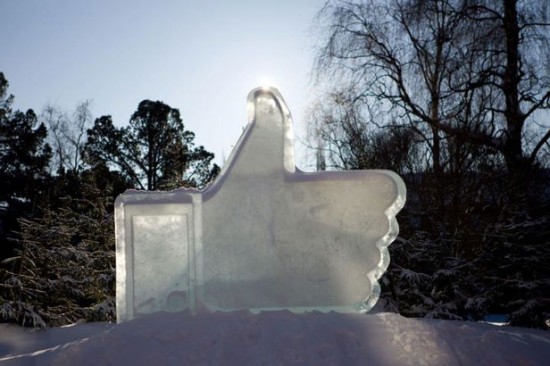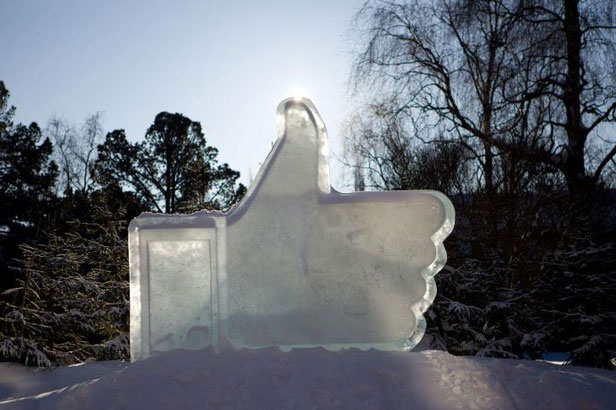Business Impact
Facebook's New Power Player
As the social network grows, does its responsibility to use energy wisely also increase? Facebook’s energy czar, Bill Weihl, has the answers.



How much electricity does sharing a photo on Facebook take? How much carbon does it put into the atmosphere?
Facebook doesn’t reveal how much energy it uses. But overall, the vast computer farms that handle Internet data now use up 1.3 percent of the electricity generated globally. Facebook’s energy use has been growing particularly fast. It processes more than 250 million photo uploads each day, and some two million “like”s and comments every minute.
Energy is foremost a competitive issue for Facebook. The computers, facilities, personnel, and electricity needed to keep your profile up to date, and available anywhere, are the company’s largest single expense. That’s one reason Facebook began to design and build more energy-efficient server farms from scratch. Its first data center, opened last April in Prineville, Oregon, uses 38 percent less energy than other facilities to do the same work, according to the company.
Still, the data center has a capacity to draw 28 megawatts of power. That is about as much as everything else in Crook County (population 26,000), where it’s located. What’s more, the power comes from a utility that burns coal to make energy. A coal-powered social network? In the image-conscious tech world, green credibility matters. It wasn’t long before Greenpeace turned Facebook into the target of an aggressive “Unfriend Coal” campaign that garnered 181,000 “likes” on Facebook’s own Web pages.
All of this is why Bill Weihl is important. The computer scientist was named a “hero of the environment” by Time magazine in 2009 for his work at Google, where he served as clean-energy chief until January. Now Facebook has recruited Weihl to be its own point man on energy at a critical time. The company is expanding its Prineville facility and is building two more data centers—one in North Carolin, and another in Sweden, which will use hydroelectricity. More are to come as the network marches toward the billion-user mark, which it is likely to hit this year.
Business editor Jessica Leber spoke with Weihl, whose title is manager of energy efficiency and sustainability, to learn whether the social network will try to reduce its use of fossil fuels and help its users cut down as well.
TR: What’s exciting about your job?
Weihl: It’s been enormously fun digging in and learning how the systems are put together here. Facebook is leading the world in data-center energy efficiency. But we’re just beginning to get our heads around how to green our energy supply. We’re connected to the same grid as everyone else, and our energy mix is not that different from the U.S. grid. We’d like it to be cleaner over time. We’d like it to be cheaper over time. We’d like to find ways to make that happen that isn’t only about greening the electrons that flow into our facilities, but is about greening the grid as a whole. I don’t have the answers to that yet. But that’s really the goal.
How much energy does Facebook use in a day?
We haven’t disclosed that yet. Once we’re past the IPO, we plan to be significantly more transparent, obviously, than we have been to date. We’re working on figuring out what we can disclose and how to do it. This being Facebook, it’ll be sort of an iterative, experimental process.
A campaign by Greenpeace against Facebook’s first data center ended in December when your company agreed to “prefer” future data-center sites that use renewable power. What did Facebook agree to and why?
Greenpeace saw Facebook’s announcement a couple of years ago about putting the data center in Prineville, Oregon. It’s in an area where coal is a relatively high percentage of the fuel mix. Greenpeace put a lot of pressure on Facebook. They made a lot of noise about it. They just don’t want to see that happen at all.
What Facebook agreed to do wasn’t really about Greenpeace. It was about what’s important to us. We look at a lot of sites and, all other things being equal, we will pick the one with cleaner power. But there are also business needs around finding sites with adequate power, finding sites where the cost structure works, finding sites that can be built out in a time frame that matters for the business.
How do you define the energy problem? What role can companies like Facebook have in solving it?
I think the energy problem at its core is a carbon problem. Facebook so far has had a single-minded focus on efficiency of data centers and servers. The unique thing is that we’re trying to drive change across the industry, not to just do it for ourselves. We’ve open-sourced designs for our data centers and servers. A year ago, the Open Compute Project was a vision. Now it’s beginning to be a reality. There’s beginning to be some really active collaboration across the industry. We hope it’s going to continue to expand.
I’d love to see similar collaboration around improving the energy mix. We can use our position as big energy customers to work with our utility suppliers to figure out how to improve the energy mix. It’s not something we can do alone, but by collaborating with utilities and regulators and others.
This industry can also find more ways to leverage the products, services, and technology we produce to make the world more sustainable and efficient. There’s gazillions of examples already—videoconferencing instead of traveling by plane to meet with someone; e-mail instead of sending a paper letter in the mail; shopping online instead of driving to the mall.
Does Facebook have an obligation to address problems like energy and climate change?
“Obligation” is an interesting word. One of the things that brought me to Facebook as opposed to some other place is the opportunity to leverage the Facebook platform—the 850-million-plus people a month engaged with our site—to drive sustainability in the broader world. But it’s not about us building those applications and preaching to people. It’s about finding ways for organizations to build on top of our platform and see what they do. We’ve got a few ideas related to energy and sustainability, but my hope is that there are lots of people out there who will be inspired and have even better, crazier ideas.
Opower just released an app in partnership with Facebook that lets people track their home energy use. Will getting involved through Facebook really drive people to change their habits?
What Opower does is analyze your energy usage information and say, “Here’s how you’re doing compared to other folks in your zip code and here’s what you can do better.” Making that analysis and communication social means people can be compared, or compare themselves, to their friends. It’s much more personal and relevant. It encourages people to compete in a friendly way. Maybe everyone else buys the winner drinks, or he buys them drinks. Whatever works. As for how much energy this will actually help save, time will tell.
Will there be more energy apps popping up on Facebook?
We’ll be talking with people over the next few months about how they might use the Facebook platform to drive higher energy efficiency, higher recycling rates, or advance other sustainability goals. There are areas where adding a social element could potentially make a big difference—the key is going to be finding them. We’ll be reaching out, and if groups want to reach out to us, that’s great. My hope is within a year we can have a half-dozen, or, in my wildest dreams, a dozen more apps. A year goes quickly.